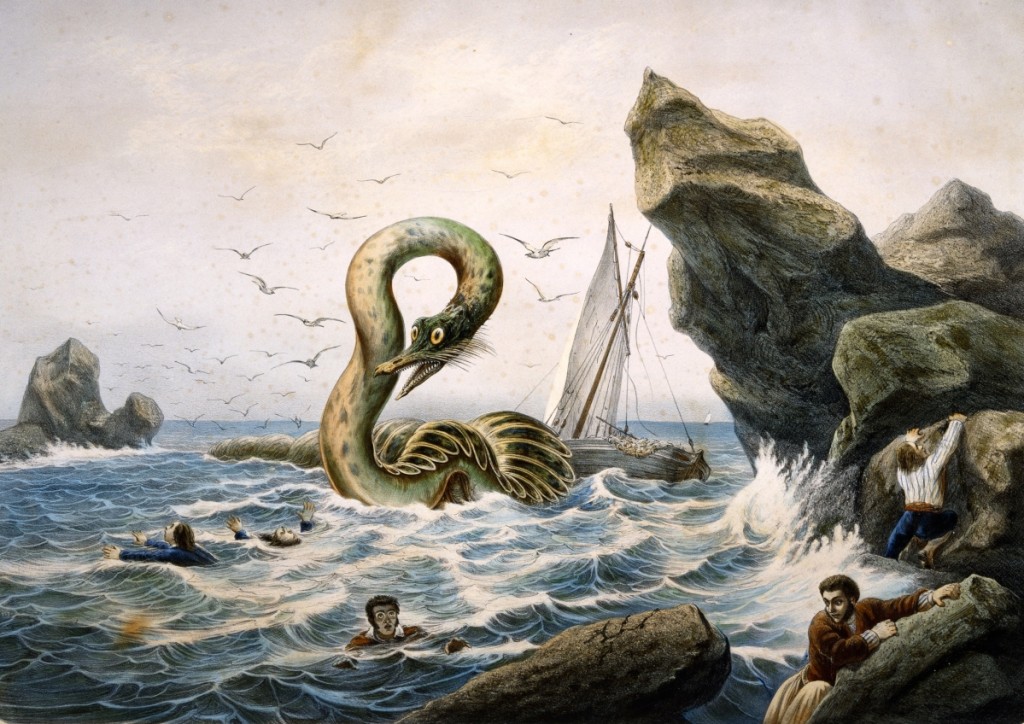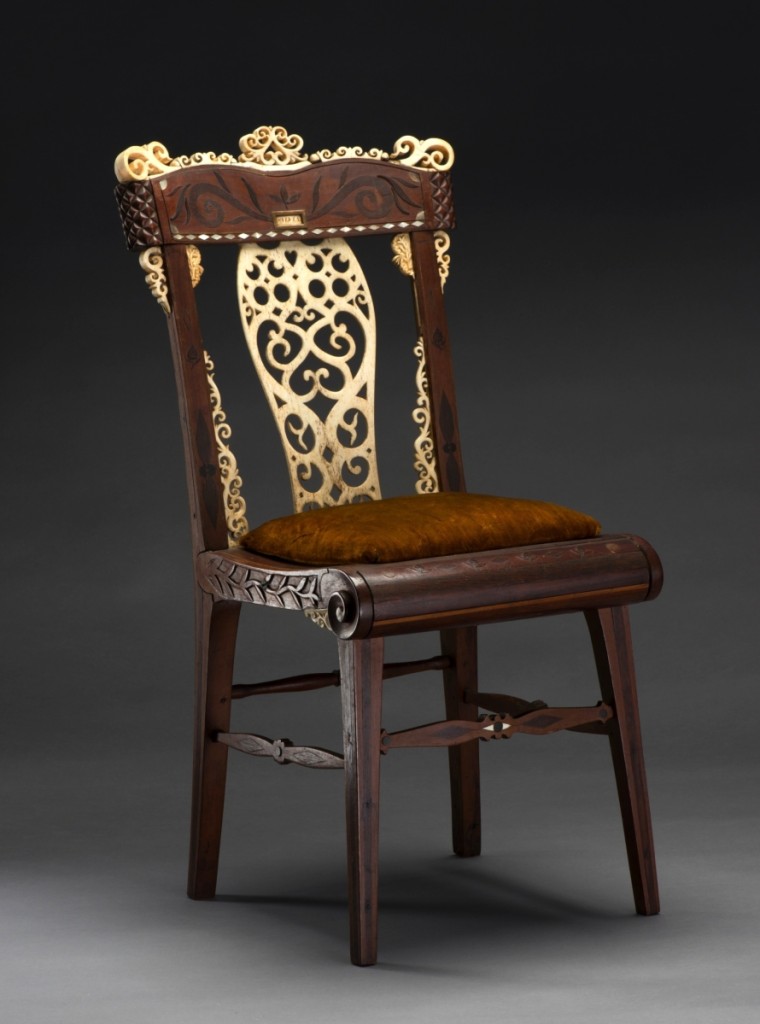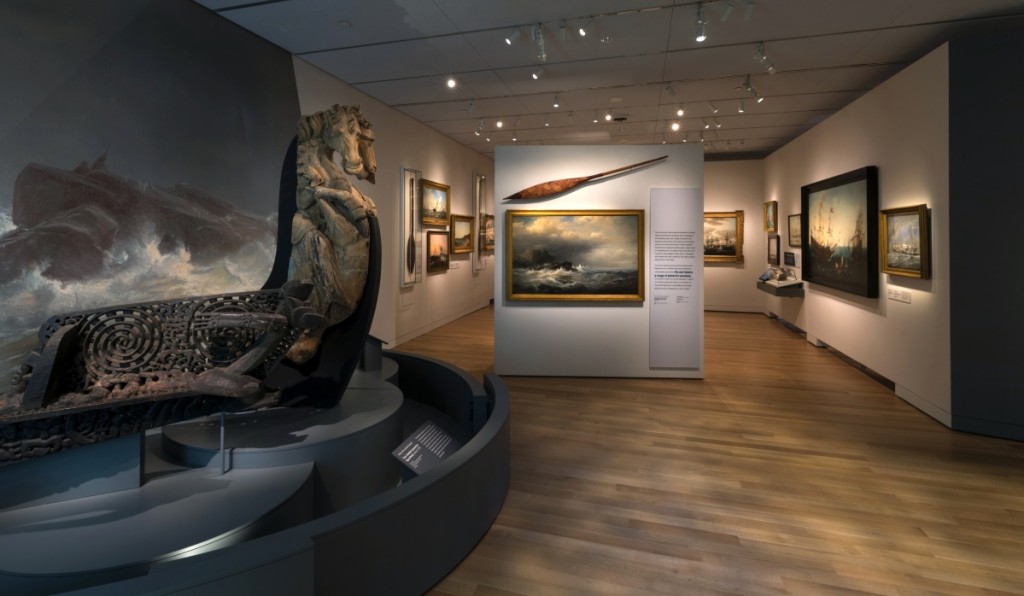The Maritime collection at the Peabody Essex Museum (PEM) in Salem, Mass., traces its origins to treasures a group of late Eighteenth Century sea captains brought back from their trading voyages into Pacific and Indian Ocean waters. The museum recently opened a new 40,000-square-foot gallery. On the heels of that opening, Antiques and The Arts Weekly caught up with Daniel “Dan” Finamore, the museum’s Russell W. Knight curator of Maritime Art and History for his thoughts on the expansion, how the maritime collection will make use of the new space, and what’s on the horizon for him.
What does the expansion mean for your department?
The new gallery gave us the opportunity to reenvision the significance of the maritime experience for present-day audiences. We did that by expanding our perspective dramatically and focusing in on works that we felt would appeal most strongly to the visitor of today. The new maritime gallery is international in scope. Our natural strengths lie with American and European art and objects, but we wanted to emphasize something universal about human interaction with the sea – both across time and geography.
How did you do that?
We wanted to create an environment that is more immediate and visceral than a white-walled art gallery display and present the collection within a milieu that gives it context. Why are these things so interesting? Because they communicate human experience of the sea, and of course on it. So, the introduction to the gallery has a large mural of open ocean, with big waves crashing on the rocks at one end. It is both alluring and foreboding. At one end, small boats are displayed at angles that suggest they are afloat on this sea, while at the other, figureheads from three cultures are positioned before the violent surf. We interpret these works differently, based on their contexts of presentation. While we haven’t dramatically increased the amount of floor space dedicated to maritime, we’ve embraced an installation strategy that offers a greater density of objects than in the recent past.

Yves, Active mid-1800s, Printed by Imprimeries Lemercier, Paris ,
“The Great Sea Serpent (Le Grand Serpent de Mer),” mid-1800s, Colored lithograph.
What do you consider some of the jewels of the museum’s maritime collection?
There are so many wonderful works that I don’t know where to start. A model made by the crew of the Constitution during the cruise in which they defeated HMS Guerriere comes to mind. And an Eighteenth Century figurehead of a horse with two heads. When we talk of a maritime art and history collection, I see the collection as an arbitrary grouping of related but distinct subjects. There’s marine painting, scrimshaw, ship models and other traditional art forms, but people also come to the field from naval history, shipbuilding technology, the history of navigation, yachting, small boats, and so on. I think our new galleries have key pieces that will appeal to the constituents of each category, but in the end, I use my own enthusiasm for a work as a measure of its timeliness for public presentation. I prioritized things that personally excite me on a visual level as well as those that relate directly to an issue currently in the public consciousness.
We’ve created three sequestered places in the gallery where we encourage people to spend an extended time looking at one object. These three things, I think, are jewels. One is a fabulous piece of scrimshaw that was given to the museum along with a poem written by the artist. The poem explains why he made it and what all the motifs he engraved on it mean. It’s a sort of answer key as to why someone would make scrimshaw. Also, a large oil painting of a French expedition into the Pacific that features two ships off the island of Tudu, but also includes all sorts of accurate details about the way of life for the local people there. Then there’s a wooden stick that was found on the beach of a remote island in 1805. It’s carved with the name of a sailor who was abandoned there for many months, and he used it as a calendar, making a notch for each day. It was brought to the museum about then and put on display. The family came to Salem to see it and thought it was the last surviving remnant of their son, but to their surprise he showed up about ten years later.
Your most recent exhibition was “Ocean Liners: Modernism and Glamour” in 2017, which you co-organized with the V & A Museum. What was the response and what do you think viewers took away from it?
I was pleased that this show extended our conversation about maritime art beyond the Nineteenth Century. We highlighted the relationship of ship interiors to major design movements and modernism generally. We also linked maritime art to many people’s lived experiences. People tend to view ocean liner travel as distinctly different than modern cruise ships, but there are plenty of commonalities. They also like to disparage cruise ship culture, but I have found that attitude to be most common among people who have never actually taken a cruise.
What are you working on now?
I’ve turned my full attention to “In American Waters,” an exhibition we are co-organizing with Crystal Bridges Museum of American Art in Bentonville, Ark.
What was the inspiration for that?
Fifty years ago, PEM codified the concept – and boundaries – of what art historians considered “marine painting” by publishing what became the most prominent reference book. Now we intend to reenvision the role of the sea in American painting for a contemporary audience that looks to art for relevancy in their own lives.
What can you tell us about that, and when can we look forward to seeing it?
We will embrace the finest examples of the traditional, but also look beyond them to include symbols and references to the impact of the sea in American life that haven’t been thought of as marine in theme. I anticipate seeing classic seascapes by Frederic Church, Fitz Henry Lane and Winslow Homer hanging alongside scenes of immigrants in steerage, urban port life and paintings that reference the middle-passage slave trade by equally famous artists. The show will include about 100 paintings and will open at PEM in May 2021. Then it will travel to the North Carolina Museum of Art in Raleigh, N.C., and then to Crystal Bridges.
Where does your interest in maritime art and history come from?
For many years I didn’t realize that what my interests amounted to had a name, or that it was even maritime anything. I thought they were all just unrelated topics, but I found them all to be exciting. As a kid I was drawn to the great Scribner’s editions of Jules Verne and Robert Louis Stevenson classics – the ones with the N.C. Wyeth and Howard Pyle illustrations. I wrote an early school paper on the Civil War naval engagement between the Merrimack and Monitor. I even drew speculative pictures of what I thought the Monitor looked like rotting on the ocean bottom. This was years before they went down and salvaged the big turret, which is now in the Mariners’ Museum. My high school senior thesis was on Coleridge’s Rime of the Ancient Mariner.

Artist in New Bedford, Mass., Child’s chair, 1815–20. Various woods, whalebone, walrus tusk, baleen, mother-of-pearl, and wool, 29-1/8 by 14-3/8 by 17-1/8 inches. Museum purchase, made possible by the John Robinson Endowment Fund, 2015.53.1.
Did your interests continue after that?
In college I took a class on Dutch painting and wrote about the origins of seascape. After college I worked as an archaeologist on the excavation of an early Seventeenth Century Dutch West India Company warehouse in lower Manhattan, where we found loads of fabulous trade goods. But it wasn’t until I took a maritime archaeology course at Boston University taught by a curator at what was then the Peabody Museum of Salem that I saw all of my interests coalesce. It wasn’t until I got to the museum as an assistant curator that I looked closely at American marine painting. No one teaches it in college or art history graduate programs. I wasn’t here for long before I realized that I totally understood what American art of the sea was all about.
Is the sea a part of your life outside the museum?
I have a few friends with boats, and one in particular who I like to sail with. I wasn’t raised in sailing culture but have embraced it more as an academic pursuit. I’m still considered a neophyte among the avid sailing community, but my friend is patient with me, and we have had some pretty arduous adventures. We’ve sailed out to Sable Island twice. Put that into Google maps if you don’t know where it is. It’s a 20-mile spit of sand in the middle of the north Atlantic. It’s 165 nautical miles east of Halifax, Nova Scotia, (that’s 190 miles for you landlubbers) and you have to get special permission to go ashore.
We’ve also stepped ashore on some of the less visited local islands, such as Boon Island off Portland, Maine. We set our sights on it because of a famous shipwreck of the Nottingham Galley in 1710, where castaways had to live for several weeks in the dead of winter before some were saved. We read a survivor’s account of the place and just had to go! It was very difficult to get ashore, but even harder to get back into our skiff and push off. It was one of those adventures that I’m glad I did but probably wouldn’t attempt again.
–Madelia Hickman Ring






